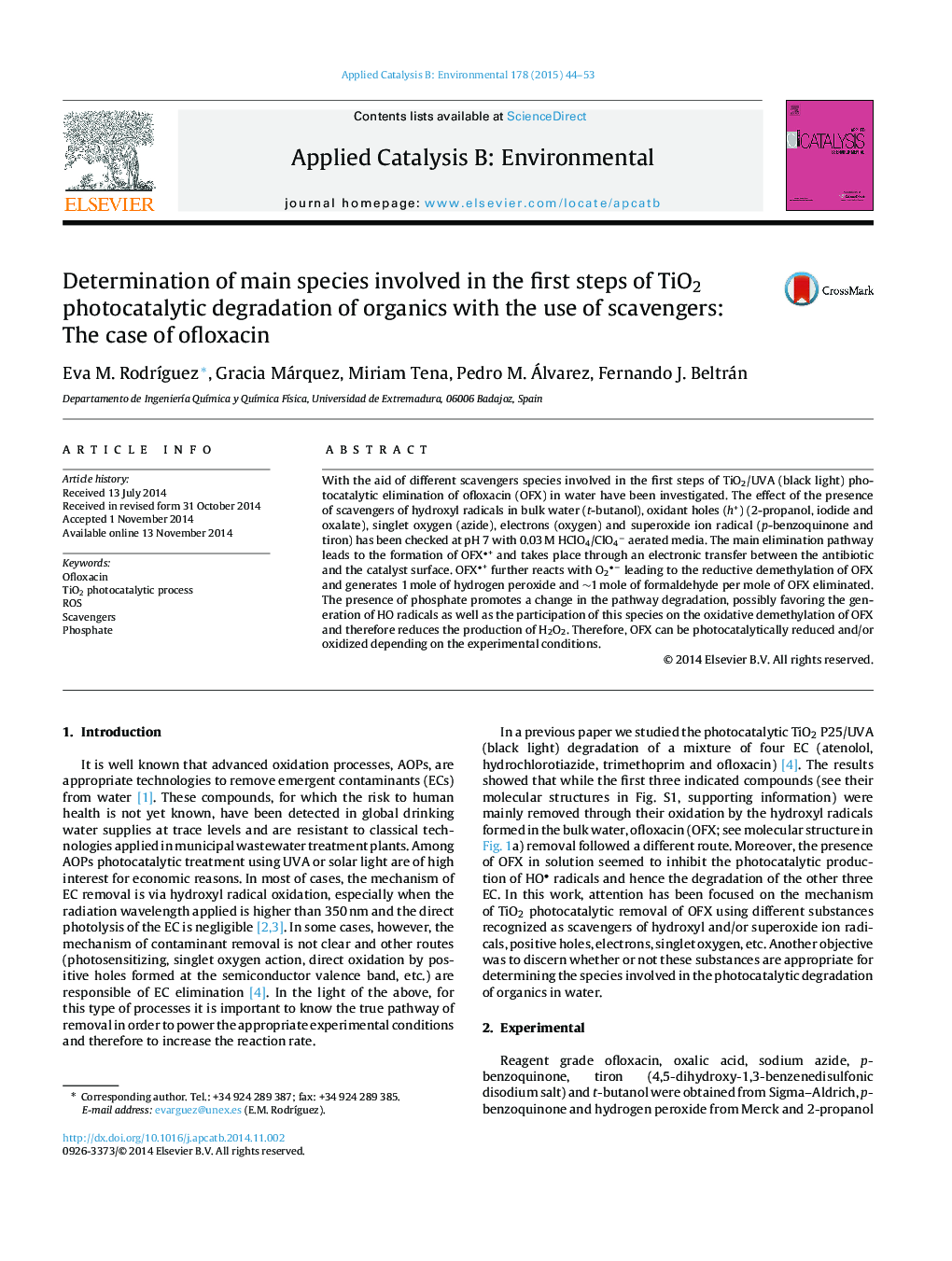| کد مقاله | کد نشریه | سال انتشار | مقاله انگلیسی | نسخه تمام متن |
|---|---|---|---|---|
| 44942 | 46386 | 2015 | 10 صفحه PDF | دانلود رایگان |

• The effect of different scavengers on TiO2/UVA degradation of OFX has been studied.
• At pH 7 HClO4/ClO4− 0.03 M aerated media O2− and h+ are the main species involved.
• Absence of O2 or presence of PO43− alters the degradation pathway of OFX.
• The use of 2-propanol, iodide and p-benzoquinone as scavengers should be avoided.
With the aid of different scavengers species involved in the first steps of TiO2/UVA (black light) photocatalytic elimination of ofloxacin (OFX) in water have been investigated. The effect of the presence of scavengers of hydroxyl radicals in bulk water (t-butanol), oxidant holes (h+) (2-propanol, iodide and oxalate), singlet oxygen (azide), electrons (oxygen) and superoxide ion radical (p-benzoquinone and tiron) has been checked at pH 7 with 0.03 M HClO4/ClO4− aerated media. The main elimination pathway leads to the formation of OFX+ and takes place through an electronic transfer between the antibiotic and the catalyst surface. OFX+ further reacts with O2− leading to the reductive demethylation of OFX and generates 1 mole of hydrogen peroxide and ∼1 mole of formaldehyde per mole of OFX eliminated. The presence of phosphate promotes a change in the pathway degradation, possibly favoring the generation of HO radicals as well as the participation of this species on the oxidative demethylation of OFX and therefore reduces the production of H2O2. Therefore, OFX can be photocatalytically reduced and/or oxidized depending on the experimental conditions.
Figure optionsDownload as PowerPoint slide
Journal: Applied Catalysis B: Environmental - Volume 178, November 2015, Pages 44–53